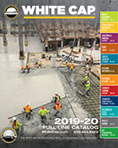$200M Tobin Bridge / Chelsea Curves Rehab
Big Challenges For Boston Commuters
Concurrent Work on 2 Iconic Structures:
- Framingham-based contractor J.F.White, has begun on Boston’s Maurice J. Tobin Memorial Bridge on U.S. Route 1. The Massachusetts Department of Transportation funded $41.6 million project that will extend over the next three construction seasons.
- The project involves structural steel repairs to the upper and lower decks, concrete deck replacement on the lower deck, followed by waterproofing, resurfacing, and painting the spans of the Chelsea approach to the bridge.
- Concurrently, crews from a joint venture between Skanska and McCourt Construction are working on a $167 million project to rehabilitate the Chelsea Viaduct Bridge
- The bridges were deemed structurally deficient since major structural repair work has not been completed on this bridge since the 1970s.
- Route 1 serves as a vital gateway connecting downtown Boston with the North Shore and beyond. Officials are concerned about the additional delays the construction will add to Boston’s ranking as the most congested city in the United States during peak commuting times.

Tobin Bridge – Historical Facts
- The bridge was completed in 1950 at a cost of nearly $27 million. In current dollars the cost would be about $2.7 billion.
- The cantilever truss bridge spans nearly two miles (3 km) from Boston to Chelsea over the Mystic River in Massachusetts. The bridge is the largest in New England. The main cantilever structure is 1,525 feet long.
Most Congested Area In US
The Maurice J. Tobin Memorial Bridge and the Chelsea Viaduct on U.S. Route 1 comprise one of America’s most important urban hubs. These two structures carry more than 63,000 commuter vehicles daily between the Charlestown neighborhood of Boston and Chelsea. And just as important, the highway is a critical commercial trucking route for transporting goods from the Boston seaport to the entire New England region.
The challenges faced by MassDOT and its contractor team to perform these two concurrent rehabilitation projects come at a time when the Boston areas is reported to be experiencing severe traffic issues. In the INRIX 2018 Global Traffic Scorecard from transportation analytics-firm INRIX, Boston was ranked as the most congested city in the United States during peak commuting times. Residents, on average, spent 164 hours in 2018 sitting in traffic, losing an average of $2,291 in personal value.
The INRIX data is an analysis of congestion and mobility trends in more than 200 cities, across 38 countries.
This is what we call a structurally deficient bridge deck. It’s at the end of its useful life. It does not mean it’s unsafe. But it does mean that in order to keep it in service it needs a significant amount of maintenance …
– MassDOT Highway Administrator Jonathan Gulliver
Repairs Long Overdue
The Chelsea Viaduct and Tobin Bridge are both more than 60 years old and are in need of significant repair and rehabilitation. Engineers had inspected the Tobin bridge and rated this key transportation hub as “structurally deficient.” A deficient bridge is one that has significant structural or maintenance issues that do not pose a risk to safety. The term does not imply that a bridge is seriously unsafe or likely to collapse. It means that the structure has cracks, damage, wear, or other problems that if not monitored or fixed, could become worse and lead to failure in the future.

The Chelsea Viaduct is considered to be in even worse condition. Large portions of the structural steel support are rusted out and pose immediate concerns. When complete, these efforts will remove 15% of the structurally deficient bridge deck in the Commonwealth of Massachusetts.
Officials at MassDOT are aware of the importance of minimizing disruptive repair activities. They have developed a strategic approach to correcting a serious maintenance problem that has been a long time in the making. Their efforts may offer an example of how to properly maintain important infrastructure items, stay within budgets, and avoid costly disturbances to traffic.
In 2008, the Tobin, then operated by the Massachusetts Port Authority, was outfitted with a network of sensors to help monitor stress and corrosion, making it the first “smart bridge” in the state. MassDOT took over operation of the bridge in 2010.
One Smart Bridge
The smart bridge technology allows engineers to better understand the causes of stresses on the bridge as they occur. This technology does not replace scheduled inspections which are done every two years and the comprehensive inspection every four years.
During the sensor installation process, an engineering firm conducted a finite element analysis of forces and strains using a three-dimensional computer engineering model of the entire 2-1/4 mile long Tobin Bridge. The model data was calibrated against actual conditions. Wireless sensors were attached to key loading areas of the bridge. The sensors’ continuous stream of data has been providing important real-time information about stresses and loads on the bridge. The data also included environmental conditions such a wind-load and steel temperature. Some sensors are used to monitor area where steel corrosion could occur.
Engineers used this data along with field report to pinpoint the structural areas that needed attention. This data, combined with field inspections helped eliminate any unnecessary repairs.
MassDOT’s Plan To Minimize Delays
To minimize commuter delays during this repair period, MassDOT official opted to perform simultaneous work on this infrastructure. By coordinating schedules between the two contractors, transportation engineers have limited duplicity in lane closures. The effects of this decision is important as the bridge includes 36 approach spans on its north end and another 32 on the south. Two of three travel lanes are expected to be open during daytime hours and one of the three travel lanes will be open during overnight hours.
Officials have included accelerated construction techniques to shorten the overall construction times when rehabilitating the surface of the Tobin Bridge and performing maintenance on the viaduct in Chelsea through 2021. These techniques include fast-setting concrete mixtures on concrete deck repair. The repair on the Chelsea approach includes repairing and retrofitting its superstructure by replacing rusted steel beams with new concrete structures that will be decorated with murals. The process uses pre-fabricated bridge pieces that will be lifted into place and secured. Engineers expect that more than 75% of this work will cause no disruption to normal traffic.
These repairs are the “second phase” efforts to minimize traffic delays on the toll bridge. J.F. White also completed a three-year, $44.8 million rehab project that ended in 2014. The prime focus of that project was the installation of the state’s first electronic tolling system.
![]()
For more info on the Tobin Bridge Rehab and related issues:
https://www.mass.gov/dot-FS_Chelsea_Viaduct_2019Apr_en.pdf
https://www.forbes.com/worst-traffic-congestion/




What was all the money from the tolls used for or should I say where did it go?
According to a 2013 expense report, Tobin Bridge tolls go toward operating expenses.
At that time Tobin tolls accounted for 3.7% of state-wide toll intake.
Operating Expenses listed were:
Employee Payroll and Benefits
Materials, Supplies, Services
Office and Administrative Expenses
Construction and Maintenance
Grants, Subsidies, Contract Assistance
Pay Go Maintenance
Snow & Ice
Debt Service (MHS and WT Principal and Interest)
https://www.mass.gov/files/documents/2018/04/26/FY_2013.pdf
I would assume things have changed in the last 5 years since they implemented all electronic tolls in 2014, added a toll for northbound drivers, but also cut the toll from $2.50 to $1.25 per direction. Consequently, they got rid of the toll booths and associated workers.